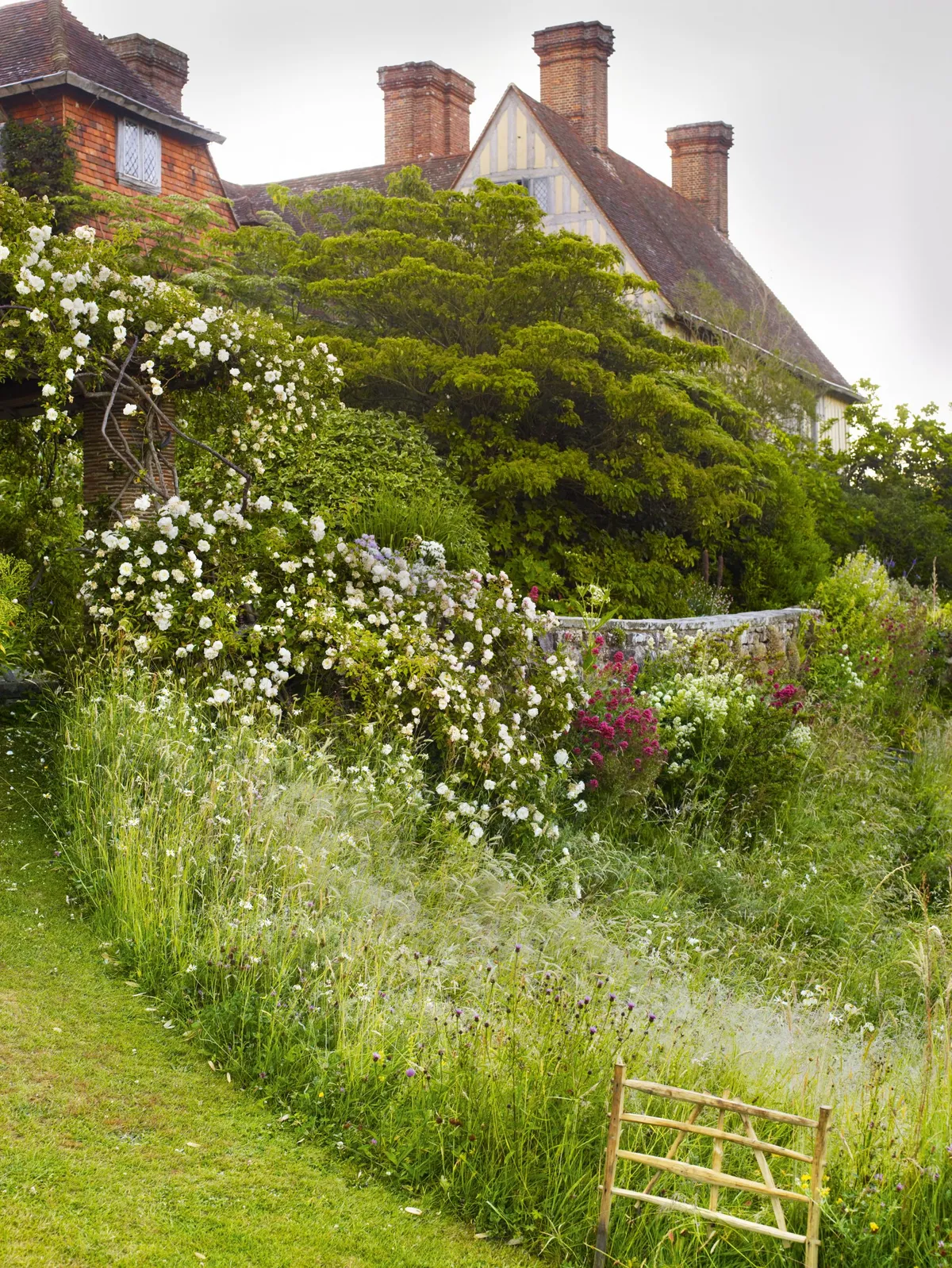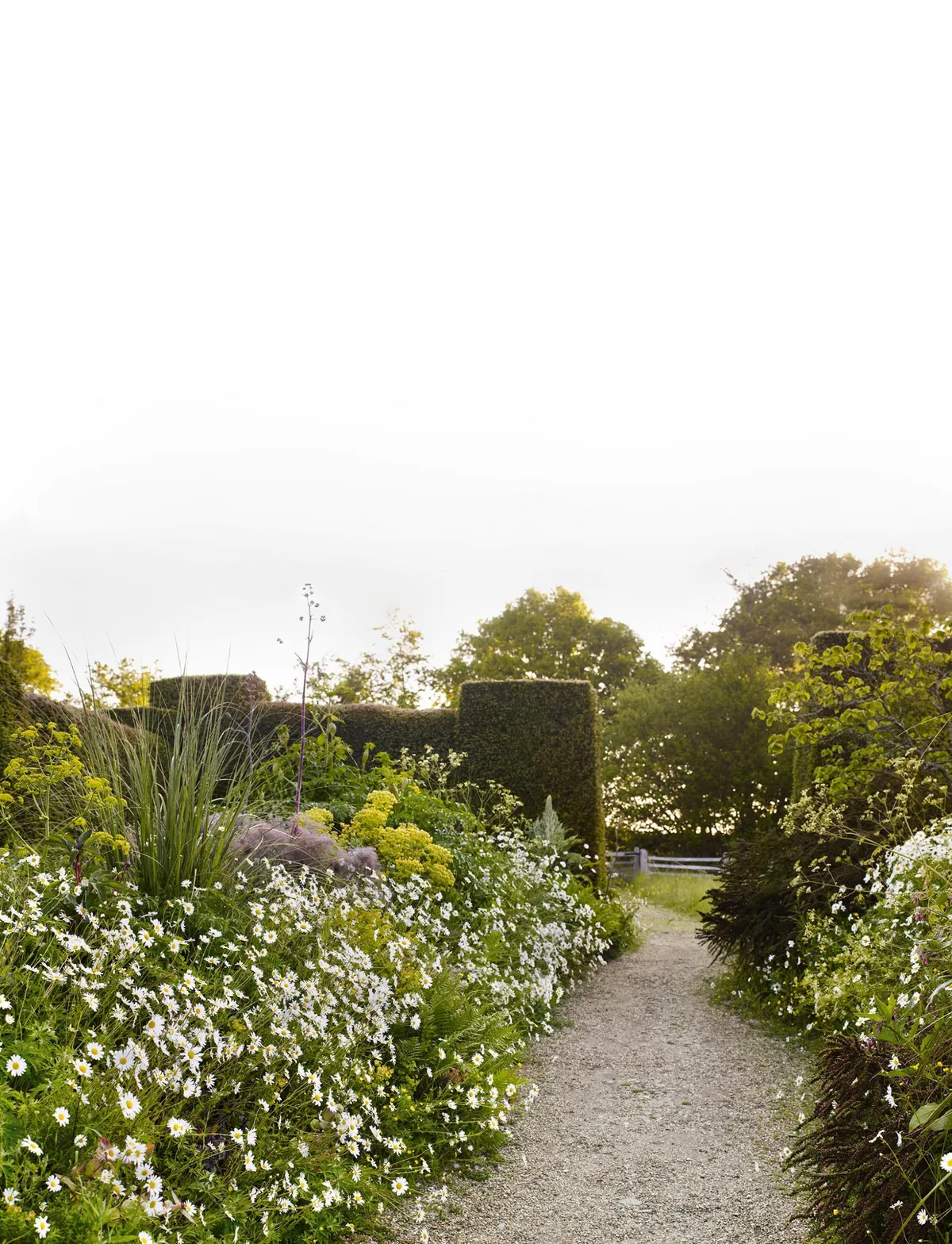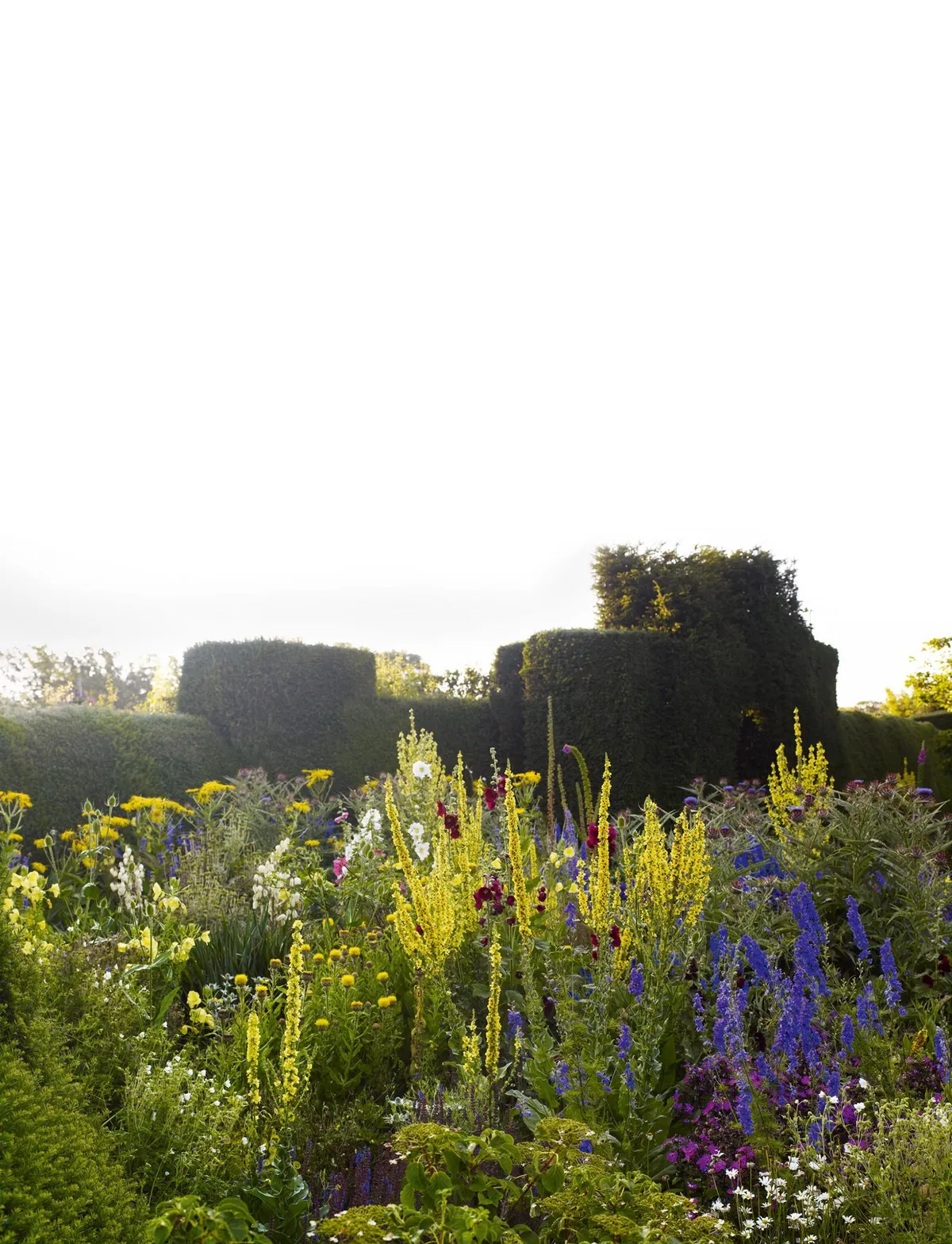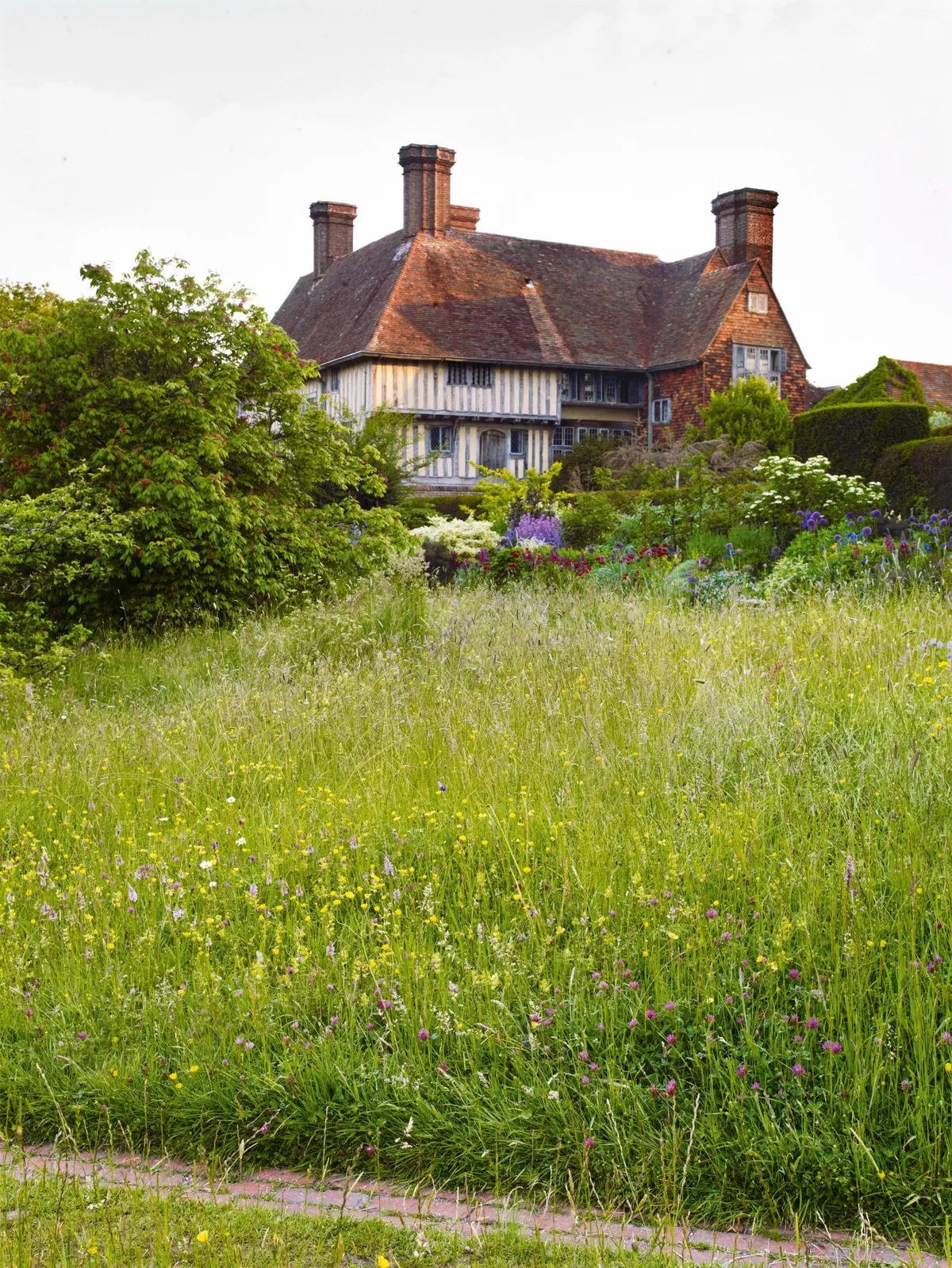The garden at Great Dixter has a reputation for being loose. Christopher Lloyd believed in plants coming first, inspired by his mother he championed a semi-naturalistic touch flowing through the veins of his garden, filtering through the borders, brushing the skirts of the hedges, walls and topiary pieces, lining the edges of the paths and running through the cracks in the floor and walls. Known for his swashbuckling style of cannas and dahlias, bright colours and endless experiments, Christo was lesser known for this softer side. Nonetheless, he was deeply in tune and respectful of life in the garden and the woodlands around him were his solace. When he died in 2006, I continued to garden in very much the same manner except I sprayed less and didn’t use as much inorganic fertiliser, phasing these out altogether within a few years. I allowed the edges of the garden and car parks, to become blurred, encouraging the hedges to billow out, and stopped mowing the verges. The place became more charming, bulging in vegetation, alive and humming with life. This, along with badgers in both woods, a dawn chorus to deafen you, and with great crested newts thriving in the Sunk Garden Pond, we felt content.
Aware of the decline of pollinators, my assistant Sarah Seymour contacted Dr Nikki Gammans to survey the bumblebees at Dixter, and a group of lepidopterists led by the late Tony Harman set up regular moth traps. Both showed impressive and fascinating results. Spurred on, I asked the British Arachnological Society to visit the garden. They seemed reluctant – not expecting an intensive, well-known garden such as Great Dixter to offer anything interesting. I realised that gardens were often regarded as sterile spaces by ecologists – much in the same way wildlife gardens were thought to be weedy bramble patches by gardeners. Once with us, the arachnologists realised what an extraordinarily rich site Great Dixter was, and soon after their visit we were on the front page of the British Arachnological Society newsletter with several pages of text outlining the great diversity of spiders including some nationally scarce species.

But our efforts seemed fragmented and incomplete – various ad hoc surveys here and there didn’t give us a handle on the overall picture. Biodiversity isn’t about just a few select species, but an integrated world with one element impacting on the other. We needed a full comprehensive biodiversity audit, looking at everything from beetles to ants, hoverflies to flies, from mosses to lichens. This would give us the knowledge that was key to managing our land in an intelligent and effective way.
Archaeologists, naturalists, ecologists, botanists and entomologist were commissioned to carry out the survey dividing the Great Dixter Estate into different zones such as the woodlands, pasture and meadows, formal ornamental gardens, ponds, and the Plant Fair Field. Each zone was surveyed and the findings fed to one principal ecologist who analysed and pulled the information together in a report. The results were astonishing. As expected, the wider estate with its ancient woodlands, pastures and meadows, and ponds was extremely rich. But, surprisingly the richest part of all was the ornamental garden. Although all zones work together with one feeding another, the survey clearly showed the garden, even with its high octane displays and penchant for bedding out, supported an extraordinary amount of wildlife. We hadn’t gardened specifically for biodiversity – it was just here as a by-product.

There was an exceptional assemblage of birds recorded throughout the site. Over 40 per cent of the UK’s bee species were logged within just one year. Rare and scarce butterflies and moths, such as the purple emperor (Apatura iris) and the scarce forest tubic (Apoda limacodes), delighted the team. It soon became obvious that there was a presence of a significant pollinator community including a high abundance of nationally rare and scarce bees, wasps, hoverflies and moths, including rarities such
as the white-bellied mining bee (Andrena gravida), and the greatly declined long-horned bee (Eucera longicornis).
Discover how to create a wildlife garden
The gardens provided a botanically and structurally rich habitat with the borders mimicking natural plant succession with one layer taking over from another providing a prolonged period of pollen and nectar from the winter through to autumn. Long grass sat next to short, some areas mown regularly, others less frequently, and some just left to turn into scrub. The estate had woodland with abundant woodland edge, it had water – clear in some cases and with vegetation in others – with shallow and muddy banks all adding to the habitat resource. There were regularly disturbed areas mimicking trauma and disturbance in the wild as well as settled plant communities. There were plenty of nest sites and breeding places, the buildings themselves serving as living spaces with wall cavities and nooks and crannies. The stone and brick walls were porous and receptive to tube nesting bees, wasps and ants. The site was rich in lichen, and with rotting wood posts, old trees and large habitat piles there was plenty there for beetles and wood boring insects.

The list went on, but most importantly Great Dixter provided a diversity of food coupled with a diversity of habitats. And on top of this by using neither herbicides nor pesticides – we hadn’t sprayed for ten years – there was a balance between host and predator. Our lead ecologist Andy Phillips, with more than 30 years of experience, was one of the few initially lukewarm about surveying Great Dixter. But now he sees us as a ‘garden nature reserve’ – a prime example of how biodiversity conservation can be integrated into gardening, demonstrating how gardens can play a crucial role in reversing the loss of biodiversity within the UK. A garden imitates woodland edge – a most diverse and valuable ecotone. And once regarded as part of the problem, gardens can now be seen as part of the solution.
The techniques used at Great Dixter can be replicated in any garden or semi-natural green space. In fact the mosaic system within Great Dixter could be replicated in any village, town or city – it just needs politicians, ecologists, town planners, councils, builders, landscapers, architects and landscape architects, volunteer groups, gardeners, and private individuals, to have the will to work together. This process has deepened the connection between us and the microcosm of life with which we share the garden.
It has made everyday life more interesting and meaningful for all of us at Dixter. The results have encouraged us to do more, act more sensitively and with more direction, and hope that it provides impetus and inspiration for other places to act the same.
Address Great Dixter, Northiam, Rye, East Sussex TN31 6PH. Tel 01797 252878. Web greatdixter.co.uk. The Great Dixter Biodiversity Audit was funded through a grant from the Heritage Lottery Fund with support from private donors. Find out more at greatdixter.co.uk/house-and-estate/biodiversity

